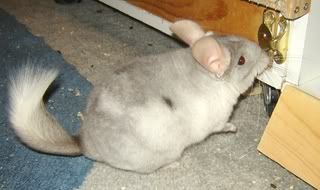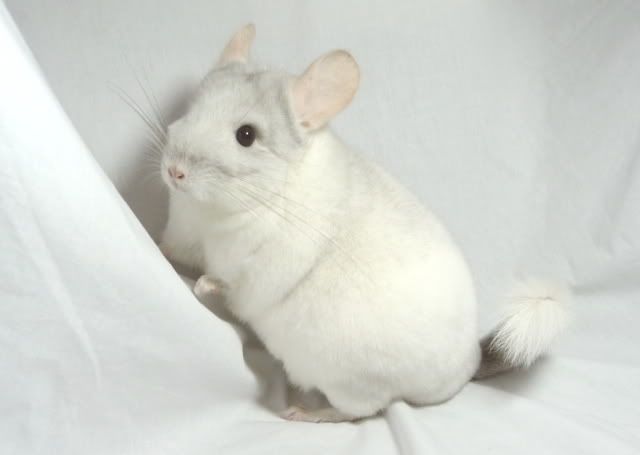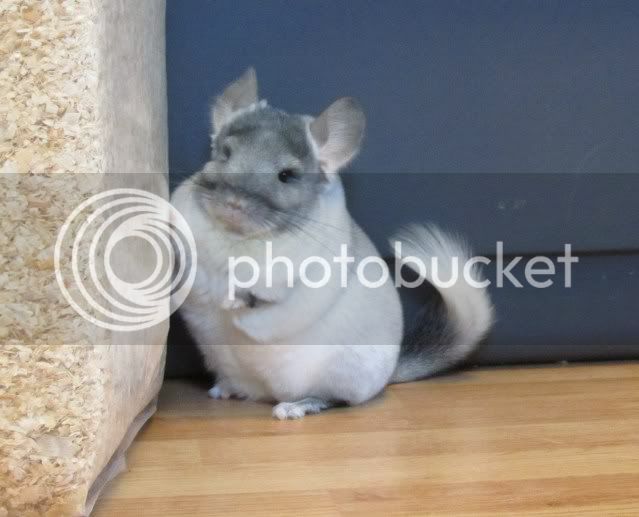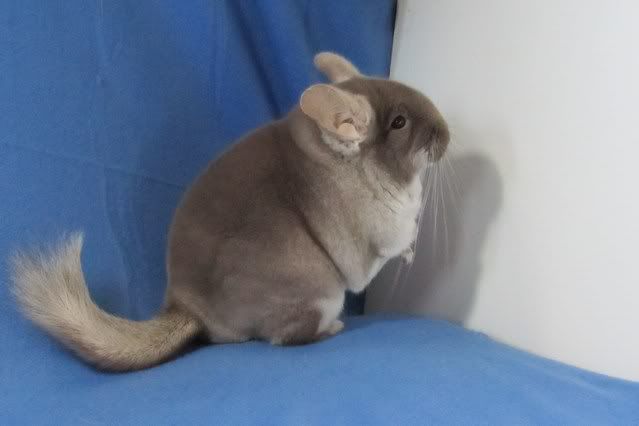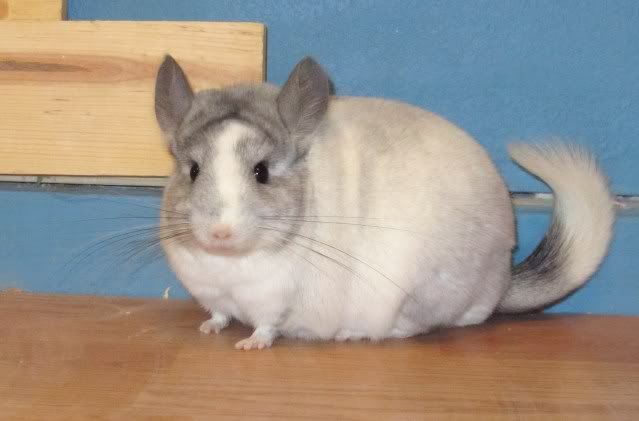Spoof
Kung Fu Chinny!
What I would like to do here is help people understand how to set oneself up to achieve a goal over multiple generations.
If you follow my posts you'll see that I talk a lot about different types of colors within a specific mutation like whites, beiges and ebonies. How different white lines throw specific traits and patterns and how some beiges do and do not oxodize or prime. Also, temperament!
Four years ago I started all over again with animals that were three generations removed from my original herd. This is the story of my white line. I'll try to make the comments relevant. I don't take pictures of 1/10th of the chins born here so you are seeing a very small sample of what is thrown. Usually the interesting ones. Feel free to ask questions!
My original Tov tan white line is owned by Alison at Alison's Chinchillas. Ronda Fraizer also had some and she is where I got these guys.
Overall Goals: Blue Tov Tan White with friendly temperament, good size and fur I can't resist touching and handling.
Generation 1. Ebony white x Chocolate.
2008 Ebony White male: Pros:Out of a litter of 6. Extremely prolific. Good milking, temperament, patterning. Cons: Small (520ish g), yellow. Sparse fur.
Knowledge of lines: Yellow came from BTK dam, probably has capability to throw large size.
Production: High, 22 babies with four females until replaced by son in 2010.
2008 Chocolate Female: Pros: Blue, Dense, Strong short fur that does not need grooming*, good size (750g). Cons: Litter history of 1 per litter.
Knowledge of lines: Out of Ronda's top ebony sire. Blue throws true and trumps all other undesirable fur colors. Line has white underfur, chocolates are born white with a black tail and spot out as they age.
How I felt about this pairing: Almost a waste of an amazing female. but necessary to reach my Tov Tan white goals.
Pictures: Chocolate Female (Dam), Sire as a 4 month old, Sire as a 2 year old, Sire with Z11 tan white son who replaced him. (pure white baby).
If you follow my posts you'll see that I talk a lot about different types of colors within a specific mutation like whites, beiges and ebonies. How different white lines throw specific traits and patterns and how some beiges do and do not oxodize or prime. Also, temperament!
Four years ago I started all over again with animals that were three generations removed from my original herd. This is the story of my white line. I'll try to make the comments relevant. I don't take pictures of 1/10th of the chins born here so you are seeing a very small sample of what is thrown. Usually the interesting ones. Feel free to ask questions!
My original Tov tan white line is owned by Alison at Alison's Chinchillas. Ronda Fraizer also had some and she is where I got these guys.
Overall Goals: Blue Tov Tan White with friendly temperament, good size and fur I can't resist touching and handling.
Generation 1. Ebony white x Chocolate.
2008 Ebony White male: Pros:Out of a litter of 6. Extremely prolific. Good milking, temperament, patterning. Cons: Small (520ish g), yellow. Sparse fur.
Knowledge of lines: Yellow came from BTK dam, probably has capability to throw large size.
Production: High, 22 babies with four females until replaced by son in 2010.
2008 Chocolate Female: Pros: Blue, Dense, Strong short fur that does not need grooming*, good size (750g). Cons: Litter history of 1 per litter.
Knowledge of lines: Out of Ronda's top ebony sire. Blue throws true and trumps all other undesirable fur colors. Line has white underfur, chocolates are born white with a black tail and spot out as they age.
How I felt about this pairing: Almost a waste of an amazing female. but necessary to reach my Tov Tan white goals.
Pictures: Chocolate Female (Dam), Sire as a 4 month old, Sire as a 2 year old, Sire with Z11 tan white son who replaced him. (pure white baby).






























